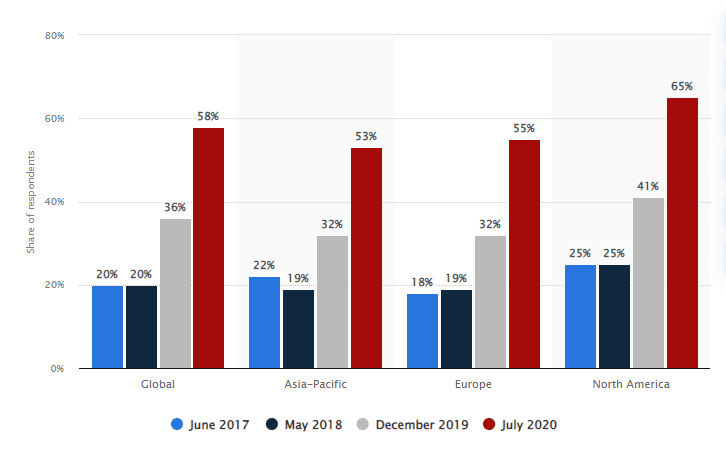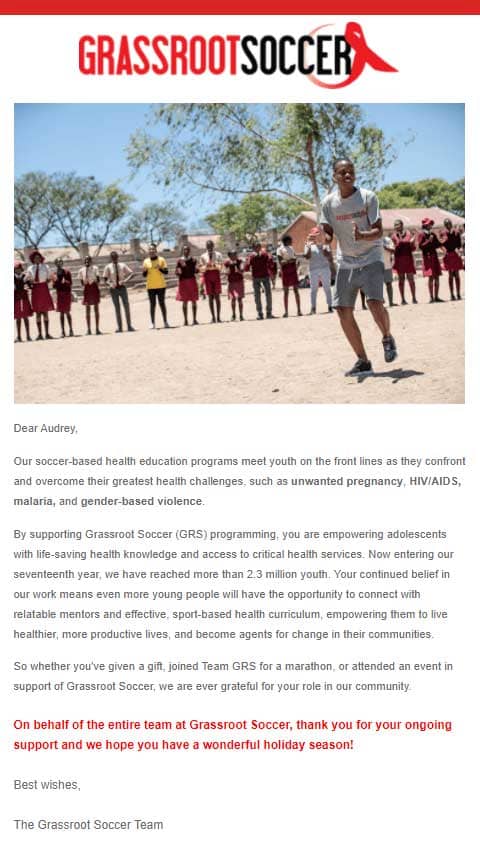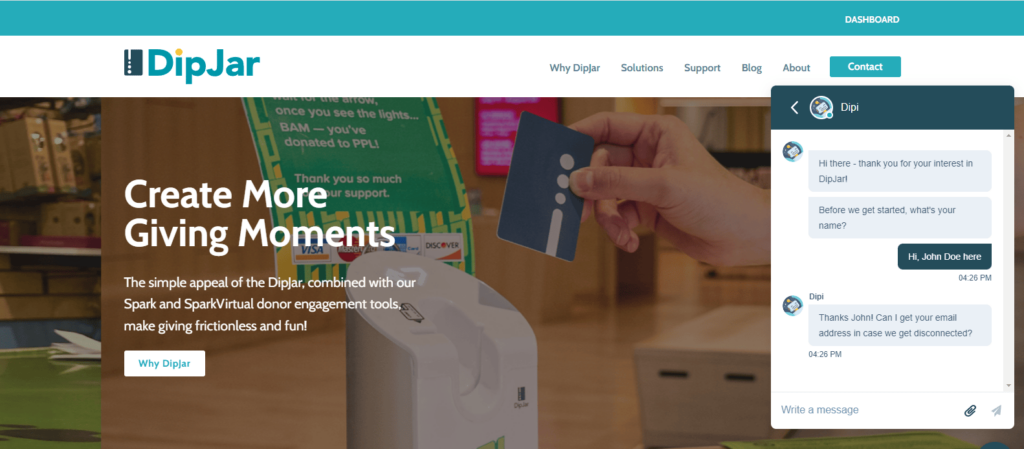7 Omnichannel Customer Engagement Strategies for Nonprofit Organizations

When it comes to nonprofits, engagement is the lifeblood that fuels volunteer participation, donations, and advocacy work. To mobilize the right audience for these crucial activities, nonprofit organizations must develop effective strategies that align with both the interests of their target demographic and the resources they have at hand.
In this article, we’ll explore effective omnichannel customer engagement strategies that nonprofit organizations can utilize in their marketing to drive engagement and revenue, and overall improve community relationships. By focusing on these strategies, your nonprofit organization can forge meaningful connections, inspire action, and create a positive and lasting impact in the community.
Chapters
- Why being omnichannel is important?
- Omnichannel Customer Engagement Strategies for Nonprofit Organizations
- Strategy 1: Send personalized thank you emails when someone donates
- Strategy 2: Integrate an omnichannel chat solution on your website
- Strategy 3: Invite people to vote for causes with their donations
- Strategy 4: Work with influencers to increase awareness and donations
- Strategy 5: Educate supporters with informative webinars, courses, or toolkits
- Strategy 6: Create challenges and encourage social media sharing
- Strategy 7: Launch a comprehensive loyalty program
- Conclusion
- FAQ
Why being omnichannel is important?

In today’s fast-paced and interconnected world, the success of nonprofit organizations hinges upon their ability to engage and connect with supporters in meaningful and impactful ways. This digital shift was accelerated further by COVID-19.
According to Statista, global adoption of digital solutions for customer interactions tripled between June 2017 to July 2020, with the biggest increase happening in North America. The share of customer interactions that are digital went up by 21 percent in July 2020 alone, compared to right before the COVID-19 pandemic in December 2019.

Source: Statista
This means that public services and nonprofits need to adapt and adjust fast in order to meet the needs of the citizens. Digitalizing and streamlining everyday workflows is a must in order to be able to cope with customer expectations.
By embracing various channels, you can connect with your audience on their terms, foster relationships, and create lasting change. Key reasons for going omnichannel include:
- Broadening your reach: your non-profit organization needs to reach as many people as possible to create awareness about your cause, garner support, and drive action. By embracing an omnichannel strategy, you can connect with individuals through multiple channels: your website, social media platforms, chatbots, email campaigns, and via working with influencers. This ensures that you reach a diverse range of audiences and engage with them on their preferred platforms.
- Enhancing your communication: you need to effectively communicate your mission, values, and impact to inspire and motivate your supporters. Whether it’s sharing success stories through social media, sending thank you emails to donors, answering continuously requested questions, or organizing interactive events, being omnichannel enables you to communicate your message in a tailored and impactful manner.
- Making data-driven decisions: an omnichannel approach allows you to gather data from different channels and analyze it to gain valuable insights. By tracking metrics such as website traffic, social media engagement, email open rates, and event participation, you can understand your audience’s behavior and preferences. This data-driven approach empowers your nonprofit to make informed decisions, optimize strategies, and allocate resources effectively, ultimately increasing your overall impact.
- Adapting to changing trends: technology and communication channels continue to evolve rapidly. By keeping up with new social media platforms, digital fundraising tools, or communication tools, you can reach new audiences and engage with existing supporters in innovative ways. This flexibility ensures that you can remain relevant and effective.
Omnichannel Customer Engagement Strategies for Nonprofit Organizations
Nonprofit organizations can employ various strategies to engage with their customers through multiple channels.
Strategy 1: Send personalized thank you emails when someone donates
When someone donates to a nonprofit organization, it’s essential to show appreciation by sending a personalized thank-you email. This gesture helps build strong relationships with donors and encourages them to continue supporting the organization in the future.
Personalized thank-you emails can make donors feel valued and acknowledged, fostering a sense of loyalty towards the organization.
Example
In a personalized end-of-year thank you email, the Grassroots Soccer team gives a summary of the nonprofit’s mission and expresses gratitude for the various ways in which the supporter has contributed throughout the year.

Source: Classy
Strategy 2: Integrate an omnichannel chat solution on your website
Public services often receive a high volume of customer calls, which can be challenging to manage effectively. Although people are afraid of malicious bots, implementing an omnichannel chat solution can help employees respond to customers more quickly and efficiently.
By incorporating a chatbot into the solution, online customers can resolve common issues without the need for agent assistance. The chatbot can also prioritize cases that require the attention of a representative, reducing the overall workload while increasing productivity and resolution rates. Additionally, learning how to use a softphone streamline customer support by enabling efficient call handling.
Example
DipJar, a cashless donation jar and an integrated payment platform that provides connected devices and a simple platform to drive donor engagement, uses a chat to engage website visitors and collect preliminary information from them (email addresses and company names) before connecting them to a human employee for support.

Source: DipJar
Strategy 3: Invite people to vote for causes with their donations
Rather than simply asking for donations, you can make things a bit more interesting by offering people to use their money to vote for something. This is an effective customer engagement strategy that many nonprofits use — it can be used often and allows you to drive revenue without directly and constantly asking your audience for money.
Example
OneCause’s nonprofit clients used make-a-donation buttons on their platform to set up straightforward voting contests where one dollar equals one vote, with the topics ranging from voting for the favorite teacher/classroom to voting for the favorite chef.
Strategy 4: Work with influencers to increase awareness and donations
An influencer is a prominent figure online that has their own, highly engaged audience. They create and share original content that resonates with their followers, so partnering with such people can be a powerful strategy for nonprofits.
Influencers can create engaging content that showcases the organization’s mission, impact, and the importance of supporting the cause. Their influence and endorsement can drive awareness and ultimately increase donations.
Example
Supermodel Halima Aden’s support for UNICEF on a project that featured “… at-home videos to teach kids something new and foster a sense of togetherness”.
Strategy 5: Educate supporters with informative webinars, courses, or toolkits
Informative webinars are one of the ways how non-profits can provide value to the community,
and they might be relatively easy to do by inviting volunteer guest experts.
Webinars can serve as a platform for sharing expertise, insights, and success stories. This in turn strengthens the organization’s credibility and inspires supporters to take action. What is more, it helps to generate more leads as you collect information from people who show interest in your company.
Example:
World Wildlife Fund’s (WWF) “Wild Classroom” library provides educators and parents with the tools and resources to help kids understand the world. Recognized as one of 2021’s Best Digital Learning Tools by the American Association of School Librarians (AASL), it has lessons, toolkits, and guides on avoiding food waste, the importance of forests and tigers, and so on.
Strategy 6: Create challenges and encourage social media sharing
An online challenge is an easy way to get people talking about the brand. These challenges can include fitness challenges, fundraising challenges, or any activity that aligns with the organization’s mission.
By participating and sharing their progress on social media platforms such as Facebook or Instagram, supporters become advocates for the cause, spreading awareness and inspiring others to join the movement.
A key to making this work is to use a challenge that has the potential to go viral and ensure it has a low barrier to entry. It can’t ask for too much money to be spent or require a lot of time or effort to do.
Example
Goldfish Crackers challenged Goldfish lovers to duet with pro basketball player, Boban Marjanović on TikTok. The challenge was simple – to hold more goldfish in one hand than Boban’s record of 301. The challenge winner won Goldfish for a year and earned the illustrious title of Official Goldfish Spokeshand.
Strategy 7: Launch a comprehensive loyalty program
Consider implementing a comprehensive loyalty program tailored to your nonprofit. Such programs are aplenty in the for-profit sphere, but in fact, they can be just as powerful anywhere where a physical or emotional transaction takes place.
Example
The Donor Advantage Program by the New York Blood Center (NYBC), where donors receive points for each pint of blood they donate. These points can be redeemed for gift cards, travel, merchandise, or even a charitable contribution to another organization.
Conclusion
Omnichannel customer engagement is crucial for nonprofit organizations looking to drive engagement in volunteer participation, donations, and advocacy work. To achieve this, nonprofits must develop effective omnichannel customer engagement strategies that align with the interests of their target demographic and the resources they have at hand.
By utilizing multiple communication channels in a cohesive and integrated manner, nonprofits can reach a wider audience, build meaningful relationships, and drive donor support. By meeting donors where they are and providing a seamless experience, nonprofits can effectively inspire and engage individuals to contribute to their cause.
FAQ
What Is Omnichannel Customer Engagement for Nonprofits?
Omnichannel customer engagement in nonprofits refers to creating a seamless and integrated experience for donors, volunteers, and beneficiaries across various channels, including online, social media, email, and in-person interactions.
Why Is Omnichannel Engagement Important for Nonprofits?
It’s important as it helps create a consistent and unified experience for supporters, no matter how they choose to interact, enhancing engagement, trust, and long-term relationships.
How Can Nonprofits Implement an Omnichannel Engagement Strategy?
Implementing an omnichannel strategy involves understanding the various channels your audience uses, integrating these channels for a cohesive experience, and ensuring consistent messaging across all platforms.
What Are the Key Channels to Consider in Omnichannel Engagement for Nonprofits?
Key channels include the nonprofit’s website, social media platforms, email communications, fundraising events, direct mail, and in-person interactions.
How Does Omnichannel Engagement Enhance Donor Experience?
Omnichannel engagement provides donors with a personalized and convenient way to interact with the nonprofit, increasing satisfaction, loyalty, and the likelihood of continued support.
What Role Does Technology Play in Omnichannel Engagement for Nonprofits?
Technology is crucial for tracking and managing interactions across different channels, personalizing communication, and providing data insights for improving engagement strategies.
How Can Nonprofits Ensure Consistency Across Different Channels?
Consistency can be ensured by having a unified brand voice, using integrated communication tools, and regularly reviewing content across all channels for alignment.
What Are the Challenges in Implementing an Omnichannel Strategy for Nonprofits?
Challenges include integrating different technology platforms, managing and analyzing data from various sources, and ensuring consistent and personalized communication across all channels.
How Can Nonprofits Measure the Success of Their Omnichannel Engagement Efforts?
Success can be measured through metrics like engagement rates, conversion rates, donor retention rates, and feedback from supporters regarding their interaction experience.
What Best Practices Should Nonprofits Follow in Omnichannel Customer Engagement?
Best practices include understanding supporter preferences, using data-driven insights for personalized communication, investing in the right technology, and regularly evaluating and adapting strategies.
How Can Nonprofits Personalize Communication in an Omnichannel Strategy?
Personalization can be achieved by using data analytics to understand individual supporter preferences and tailor messages and content accordingly across different channels.
What Is the Role of Social Media in Omnichannel Engagement for Nonprofits?
Social media plays a significant role in omnichannel engagement by providing platforms for real-time interaction, content sharing, fundraising campaigns, and community building.
How Important Is Mobile Optimization in Omnichannel Engagement for Nonprofits?
Mobile optimization is crucial as many supporters use mobile devices for internet access. Ensuring mobile-friendly content and interactions is key to effective omnichannel engagement.
Can Nonprofits Use Event Marketing as Part of Omnichannel Engagement?
Yes, event marketing can be integrated into omnichannel strategies, promoting events across various channels and engaging attendees before, during, and after the event for a cohesive experience.
How Can Nonprofit CRM Systems Aid in Omnichannel Engagement?
Nonprofit CRM systems can centralize supporter data from various channels, streamline communication efforts, and provide insights for personalized engagement strategies.
What Are Some Common Mistakes Nonprofits Should Avoid in Omnichannel Engagement?
Common mistakes include not aligning messaging across channels, neglecting data privacy and security, underutilizing analytics, and failing to regularly update content and strategies.
How Can Nonprofits Integrate Offline and Online Engagement Efforts?
Integration can be achieved by ensuring offline activities (like direct mail or in-person events) are connected with online actions (like email follow-ups or social media posts), creating a seamless supporter journey.
What Is the Impact of Omnichannel Engagement on Fundraising Efforts?
Omnichannel engagement can lead to more effective fundraising by reaching supporters through their preferred channels, providing multiple touchpoints, and creating a more compelling narrative around fundraising campaigns.
How Can Nonprofits Use Content Marketing in an Omnichannel Approach?
Content marketing can be used by creating and distributing relevant, valuable content across various channels, tailored to the interests and behaviors of the target audience.
What Training Do Nonprofit Teams Need for Effective Omnichannel Engagement?
Team training should include understanding the omnichannel strategy, using CRM and analytics tools effectively, maintaining consistent communication across channels, and personalizing supporter interactions.
How Can Nonprofits Ensure a Unified Brand Experience Across All Channels?
Ensuring a unified brand experience involves maintaining consistent branding, messaging, and tone across all channels, and aligning all communications with the organization’s mission and values.
What Is the Importance of Real-Time Engagement in Omnichannel Strategy?
Real-time engagement, such as responding promptly on social media or during live events, is important for creating a dynamic and interactive experience that can increase supporter involvement.
How Can Feedback and Surveys Be Integrated into Omnichannel Engagement?
Feedback and surveys can be integrated by soliciting opinions through various channels, like email, social media, and events, and using this feedback to refine and improve engagement strategies.
What Role Does Video Content Play in Omnichannel Engagement?
Video content can enhance engagement by providing a visually compelling and easily shareable medium to convey stories, updates, and appeals across various platforms.
How Can Storytelling Be Leveraged in Omnichannel Strategies?
Storytelling can be leveraged by sharing impactful and emotive stories across channels, creating a narrative that connects supporters with the nonprofit’s cause and mission.
Can Automated Communication Tools Be Used in Omnichannel Engagement?
Automated tools, like chatbots or email autoresponders, can be used for initial interactions or to provide timely information, complementing personalized engagement efforts.
What Strategies Can Enhance Donor Retention in an Omnichannel Approach?
Enhancing donor retention involves regular, meaningful engagement, recognizing and appreciating their support across channels, and providing them with updates on the impact of their contributions.
How Can Nonprofits Balance Digital and Traditional Communication Methods?
Balancing digital and traditional methods involves understanding the preferences of different supporter segments and integrating both methods for a comprehensive engagement strategy.
What Are the Data Privacy Considerations in Omnichannel Engagement?
Data privacy considerations include ensuring compliance with regulations like GDPR, securing personal data, and being transparent about data usage with supporters.
How Can Nonprofits Use Analytics to Optimize Omnichannel Engagement?
Nonprofits can use analytics to track engagement metrics across channels, understand supporter behaviors and preferences, and adjust strategies for more effective communication and interaction.
Improve your Marketing with the Power of AI
See how you can start with AI Marketing and reach your goals faster than ever before. Check out the Tips, Strategies, AI Tools, Masterclass, Courses, and Community. Unleash the true potential of your brand with the help of AI.